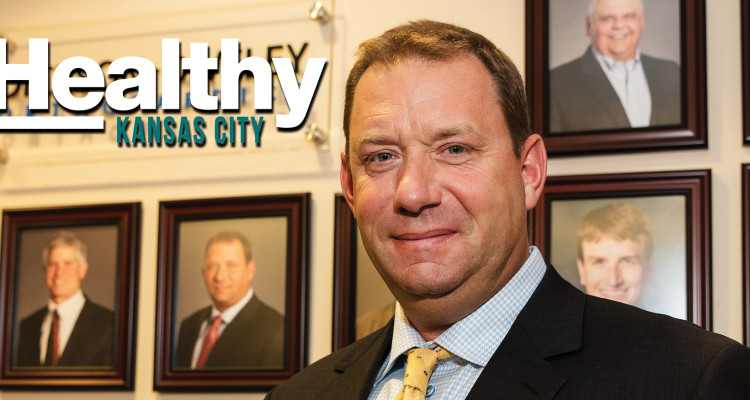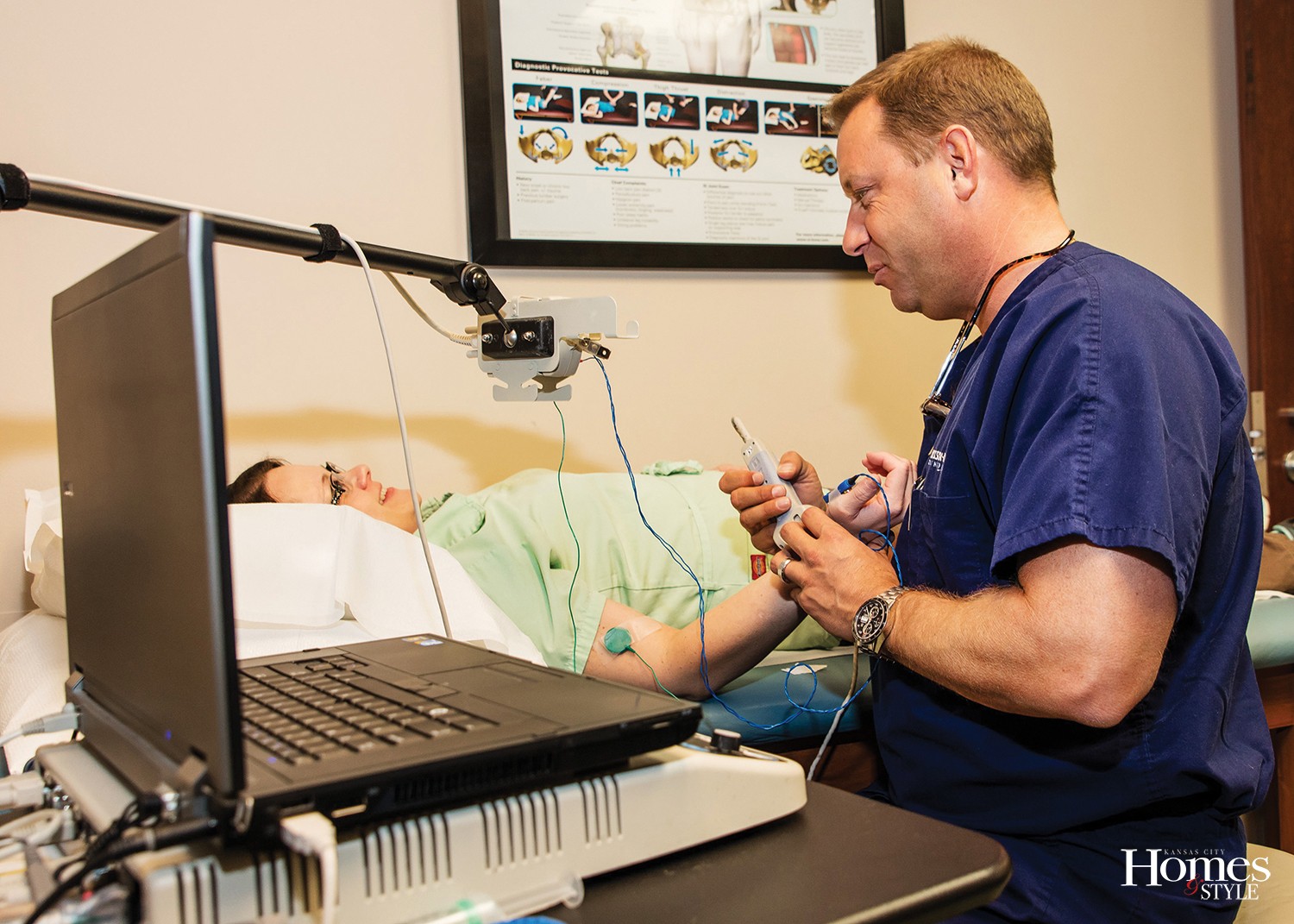C. Lan Fotopoulos, M.D.
Spinal Cord Stimulation: A Proven Procedure to Greatly Reduce Chronic Back Pain
For chronic leg or arm pain that is not relieved through traditional methods, spinal cord stimulation may be a welcome option.
There are many reasons why one might want to spend time with Dr. C. Lan Fotopoulos. His easy-going and friendly presence is welcoming and approachable. His diverse background holds countless stories to be told, and his seemingly endless fountain of knowledge on many topics will keep you captivated. However, Dr. Fotopoulos will be the first to note that there is one pivotal reason why you just might want to spend some quality time with him: back pain.
“The number one reason people call a doctor is for the common cold,” noted Dr. Fotopoulos. “The number two reason is for back pain.”
A graduate of the University of Missouri-Kansas City School of Medicine, Dr. Fotopoulos is board-certified in Physical Medicine and Rehabilitations, Pain Medicine, Sports Medicine and Undersea Hyperbaric Medicine. Additionally, he has worked as an emergency room physician and also served as a lieutenant commander and diving and undersea medical officer in the United States Navy. He is currently practicing medicine at Dickson-Diveley Orthopaedics, with locations in Leawood and in Kansas City at Saint Luke’s Hospital Campus Medical Plaza, where he specializes in spine and sports medicine. When it comes to issues affecting the spine, it’s a safe bet to say that this dedicated and experienced physician has your back.
Nearly everyone at some point in their lives struggles in the battle with back pain, which presents for various reasons, most notably due to past trauma or previous back surgeries. If persistent back pain continues to plague you, you may have simply resigned yourself to the fact that it is an inevitable part of life and that you simply have to make room for the pain. Thanks to a procedure known as spinal cord stimulation (SCS), offered by Dr. Fotopoulos and the staff at Dickson-Diveley, you can now make room for an improved quality of life.
Dr. Fotopoulos explained that most often the demographics of his patients can be found in office workers who typically complain of upper back problems due to excessive use of computers and laptops and also in manual laborers, who will most likely present with lower back issues. His expertise in treating patients stems not only from his skills and credentials as a physician, but also from his own experience as a patient.
“I have had epidurals annually on my cervical spine,” he said. “I understand and can relate to my patients. I have been there.”
He noted that a tremendous subset of the population living with chronic pain realizes impressive results through SCS, which involves a device surgically placed under the skin that sends a mild electric current to the spinal cord. A pulse generator is implanted under the skin with an extension wire that connects the generator to the lead, which is implanted just above the spinal cord. The lead contains electrodes that deliver an electric current to the spinal nerves.
“It is important to note that the stimulation does not eliminate the source of the pain; instead, it changes the signal to the brain, changing the feeling of pain to more of a tingling sensation,” Dr. Fotopoulos emphasized. “The brain and spinal cord can understand different types of pain, such as hot, cold, sharp, dull or vibrational. However, even though the brain and spine can understand an untold number of those types of pain, they can only experience one type at a time.”
The best candidate for this procedure, according to Dr. Fotopoulos, is the patient who has either experienced back trauma of some sort or who has had prior surgeries with continued pain in the back and down both legs and would not necessarily benefit from additional surgeries. With this new procedure, it is not a matter of masking that pain or even tricking the brain; it’s simply changing the type of pain – or sensation – you feel.
“We change the character of the feeling,” he commented.
Unlike fusion hardware, this system is placed within soft tissue and can be removed if necessary. The generators are battery-operated and approved for use within the body for 15 years. A self-described “knuckle-dragging conservative,” however, Dr. Fotopoulos errs on the side of caution and advices replacing the generator every 10 years.
Done on an out-patient basis, this procedure does adhere to strict pre-operative standards. First, a consultation is done to determine if it is right for the patient. From that point, the patient is required to consult one time with a psychologist for an evaluation. Upon successfully meeting these two requirements, the patient undergoes a trial procedure.
“We percutaneously thread two wires up the epidural space into a certain area around the spine that we know affects different pain centers,” stated Dr. Fotopoulos. “We leave it attached for a week as the patient goes about his or her daily routine. The purpose of this is to determine if it positively affects one’s daily life and restores more quality to that end. If it is successful and it works, then he or she is a candidate for a permanent system. However, we have them wait for two weeks to rule out any evidence of infection and at that point we will then surgically implant the device.”
As a leading expert in this course of treatment, Dr. Fotopoulos knows which patients will do well with this system based on medical history and related complaints.
“I have been doing this for 12 years and probably trial and implant 10 per month,” he said. “I want 75% or better improvement of symptoms in my patients and I believe that 75%-100% reduction in those symptoms is attainable.”
An SCS procedure can help reduce chronic pain that is caused by many reasons, including sciatica, failed back surgery, various diseases of the nervous system, angina, multiple sclerosis and spinal cord injury.
“This type of work is very rewarding when dealing with the chronic pain population,” expressed Dr. Fotopoulos. “When patients come to me who have tried other modalities, such as physical therapy, epidurals, and medications and are still not seeing results, this is where I can help. I cannot promise, however, that it will mean they are totally off any medications, but most patients have been able to cut those medicines in half.”
Most of the surgeries are performed at the Kansas City Orthopaedic Institute, which is partially physician-owned.
“We have a staff of experts in orthopaedic care, from the front desk to the anesthesiologists,” said Dr. Fotopoulos. “As a result, we realize low infection rates and high patient satisfaction rates.”
Among those satisfied patients, it has been documented that two-years post-surgery, 76% of them still think it is beneficial and has improved their quality of life and is more cost effective than a second back surgery.
“Certainly there are reasons for additional back surgeries,” expressed Dr. Fotopoulos. “But for continued pain, SCS is typically more economical and beneficial.”
Saint Luke’s Hospital Campus Medical Plaza Building 1, Ste 610, 4321 Washington St., KCMO
3651 College Blvd., Leawood, KS 66211











